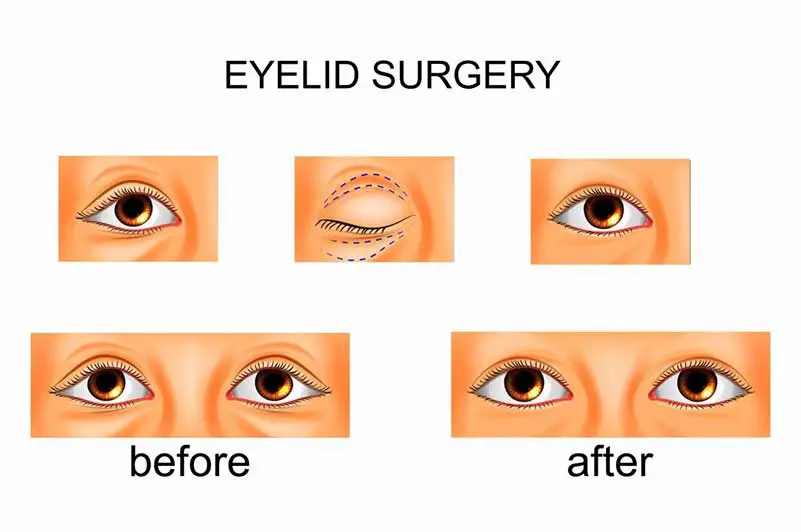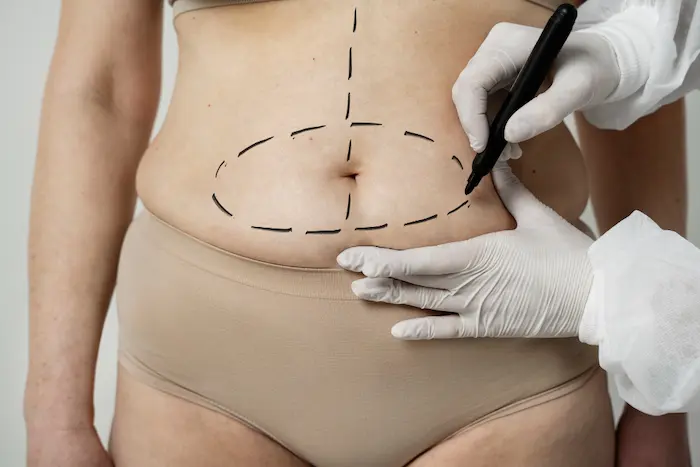
7 Common Myths About Facelifts and The Associated Truths
Facelift or Rhytidectomy is gaining popularity worldwide due to the overwhelming results it reflects on your appearance. When reversing the...
Facelift or Rhytidectomy is gaining popularity worldwide due to the overwhelming results it reflects on your appearance. When reversing the common signs of facial aging, no other treatment can provide as dramatic results as one, which is one solid reason behind its ubiquitous acceptance. The stats below prove its growing demand even further.
Let’s Go Through Some Stats!
You can sense the global craze of facelift with the fact that more than 131,000 facelift surgeries were carried out alone in the United States in 2016, making it one of the most common types of cosmetic surgery procedure performed in the country. Talking about top 10 cosmetic surgery procedures across the globe, Facelift, with 419,046 surgeries stood 9th. No wonder, it is a widely practiced method to enhance the facial appearance and people just love embracing it for a total makeover.
Just to give you a brief about it, facelift is a type of cosmetic surgery that involves lifting the skin of the face and neck along with the underlying muscle to make a face appear more toned and smooth. Its results are long lasting provided that you follow your surgeon’s advice religiously.
Some Common Myths
Despite its limitless popularity, many misconceptions about facelifts keep doing rounds now and them. You may be willing to give a significant overhaul to your face but feel apprehensive to proceed because of the myths surrounding your mind. In any such case, it would be wise to bust these myths and know the facts. Here, we have tried to unleash the reality behind a few of the more prevalent facelift myths. Hope, these points will help to decide the best for you.
Myth 1: Results Look Fake
The media adores reporting on botched cosmetic procedures. While standing in line to pay for your items at the store, you probably saw botched facelifts on a tabloid's cover. People who wanted extremely unnatural results often went against the advice of their plastic surgeons and underwent a series of surgical procedures to achieve those outcomes. A majority of these cases involve people who fall into this category.
The truth is that a facelift procedure performed correctly by an experienced plastic surgeon should not be overly noticeable and in no way appear unnatural. Plastic surgeons who have received board certification can produce youthful and vibrant results without divulging their trade secrets.
A complete facelift indeed takes care of both the face and the neck at the same time. The good news is that you can tailor your facelift to particular problem areas because of the wide variety of surgical methods available today. Depending on the specific problem region you want to address, you may do a lower or mid-face lift, a neck lift, or a temporal lift. You may even combine a targeted facelift with nonsurgical treatments to achieve the best possible results for your overall appearance.
In any case, your surgeon would guide you on opting for the best facelift surgery, whether standalone or in combination with other procedures.
Myth 2: There Is Just One Type of Facelift Procedure
There is no such thing as an identical twin. Every patient comes in with a unique set of facial characteristics, signs of aging, and distinct goals regarding the result. The good news is that there are a wide variety of facelift procedures, each of which works to combat the signs of aging slightly differently. Combining a facelift with other procedures, such as eyelid surgery or fat transfer, can benefit many patients.
With the introduction of facelifts, the primary method was to extend the skin over the face. Although this method was successful in smoothing out creases and folds, the effects often left the skin looking pulled and lasted for a shorter time. Because it targets the ligaments and soft tissues beneath the skin, the current facelift is more successful than its predecessors, as it produces more natural effects and lasts longer.
Myth 3: Facelifts Are Only for Women
Both men and women endure the same concerns associated with facial aging, and as a result, people of both the genders are eligible for facelift surgery. In fact, you will feel surprised to know that the demand for facelift treatments by males has climbed by twenty percent since 2000, while demand for facelift procedures performed on women has remained constant, with no substantial development over the same period. Moreover, in the United States in 2016, roughly 12,000 facelift operations were done on male patients, corresponding to 9% of all facelift procedures conducted in the country.
Myth 4: Facelifts Are Only for Older People
There is no such thing as the "correct age" to have a facelift. Although one may attribute the loosening and sagging of facial skin and the underlying muscle to the natural aging process, the consequences of premature aging can manifest themselves at any age. In addition, premature aging may be the result of various reasons, such as a history of excessive sun exposure, smoking cigarettes, or failing to take proper care of the skin. A minor facelift is a surgery that may be beneficial for younger people who exhibit signs of early aging. This modified facelift technique is less invasive and provides a lift in the lower face and neck while enabling you maintain a natural-looking appearance.
Myth 5: Opting for facelifts in the age of 30s-40s may prove harmful
Much similar to the previous myth, this one is again a misconception. This is because an increasing number of individuals in their mid to late 30s and 40s are looking to reap the benefits of the surgery. Some people wish to fix problems passed down genetically, while others wish to improve their appearance before the effects of physical aging become too noticeable.
The question of how old you are is not the essential factor in determining whether or not you should get a facelift. Instead, the question of what problems you wish to fix through the surgery is what matters. When addressed at an earlier age, you may prevent concerns associated with facial aging from evolving into undesired permanent conditions. An early facelift may produce more subtle effects and seem more natural, which you can enjoy throughout some of the busiest years of your life.
Hence, there is no harm in going under the knife in your 30s-40s for a facelift surgery. Still, recommendations from your surgeon are necessary prior to the treatment. It would be good to interact with him in person and clear all your confusions regarding the surgery. He is also the best person to let you know whether you are the right candidate for facelift after examining your existing body condition.
Myth 6: Recovery is Long and Painful
Just like those who have undergone surgery, patients with facelift operations must stay away from the public eye for a specific time while they heal. After a facelift, most patients can return to their typical activities and jobs in around two weeks. However, the length of recovery time may vary depending on the specific facelift method used and the patient's overall health.
In addition, the period during which patients experience pain after treatment often remains restricted to the first few days immediately after the operation. One may alleviate this discomfort by applying ice, elevating the affected area, and taking medicine as directed. Hence, if someone tells you about the long and painful recovery period, it is better not to pay heed to him. To the contrary, consult your surgeon about the recovery phase.
Myth 7: Facelift is a costly affair
Merely speculating about the cost won’t do much to tweak your decision. Instead of listening to others, you should visit the clinics and know about the facelift cost yourself. Although, it will be reasonable as compared to the costs demanded for this very surgery in other countries. It is still better to be aware about all the surgery aspects prior to going for the procedure. Happy facelifting!
Conclusion
Because a facelift is an invasive surgical treatment, there will be some recovery time after the operation. A contemporary facelift involves making tiny incisions to hasten the healing process. Most patients only need to be off work for approximately a week, after which they can resume their typical day-to-day activities. Occasionally, any lingering swelling or bruising disappears over the next several weeks.
The crucial point here is not to believe others who have little or no knowledge about cosmetic or plastic surgery. Even if they have undergone a facelift and faced problems later on, it could be due to their personal reasons. The ideal person to enlighten you about the entire facelift surgery from preparation to recovery would be your surgeon.
The need is hence to look out for a cosmetic surgeon who could help you with a flawless transformation of your appearance through facelift. This is where we can help you out through our website. Yes, you can browse through our website to search for the best and most experienced cosmetic surgeon to perform facelift around you. After shortlisting the doctors and interacting with them one-to-one will help you to single out the most feasible surgeon for your cause.






Comments
Login & Write comment